
Nippori was located between Yanaka and Dokanyama in the northwest of the Ueno and Asukayama mountains. In the east, there were cliffs, from which a beautiful view of the rice fields, the rivers Arakawa and Edogava, and in the distance – the mountains of Uukuba and Nikko. To the north-east of the Kangyei-ji Temple was a place known as Yanaka. In Edo’s time, there were many temples in this area.
Ueno’s sublime passes into Suva, whose name derives from Shintojin jinja Shinto temple. The engraving depicts the eastern part of it. The temple garden in Nippori was later called Hanamidara. In the spring, during the flowering of the cherry blossom it was visited by a huge number of people. The garden shed was decorated with artificial hills, rocks and quaintly clipped trees. One of such trees in the form of a boat under sail is visible on the right above the red cartouche named Hiroshige. This boat was a feature of the Shuji Ji Temple.
In the center of the engraving, the Thorium Gate is barely visible, and behind them is the road to the Suva Upland, near the Suvamedin Temple. The late version of the engraving is different from the early color of the road. He becomes blue-blue instead of yellow. The colors of the clothes of travelers change. Flowering trees get an extra red color in their tops.
 The elevation of Suwanolai in Nippori by Utagawa Hiroshige
The elevation of Suwanolai in Nippori by Utagawa Hiroshige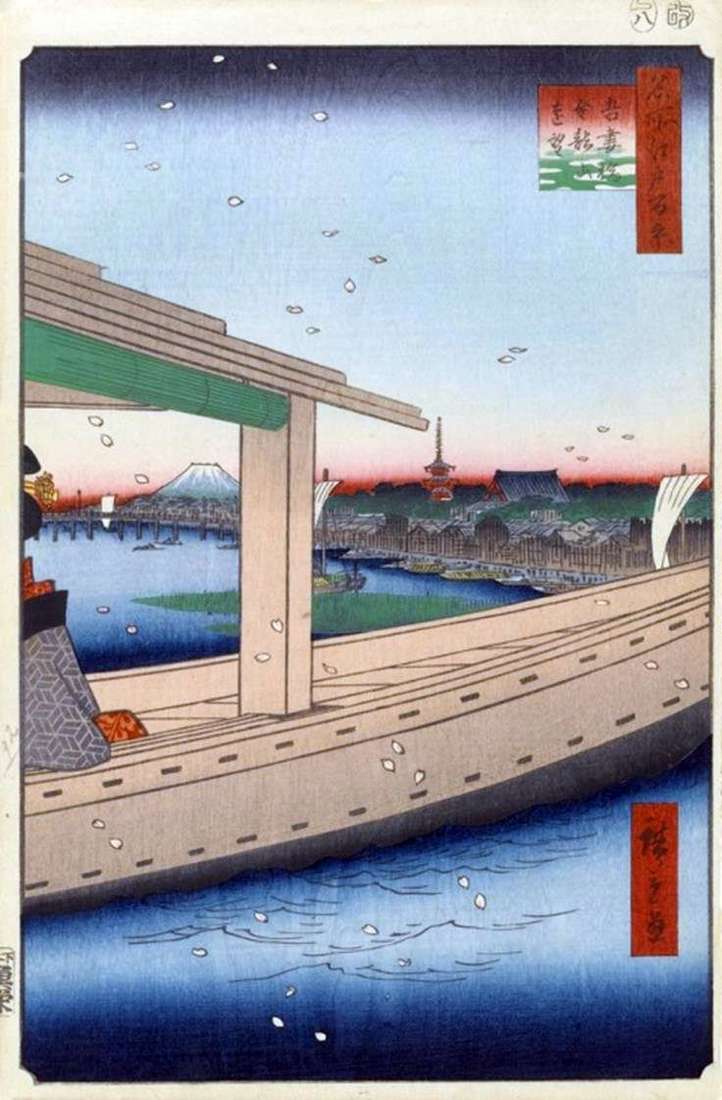 View of the Kinryudzan Monastery and the Azumabashi Bridge by Utagawa Hiroshige
View of the Kinryudzan Monastery and the Azumabashi Bridge by Utagawa Hiroshige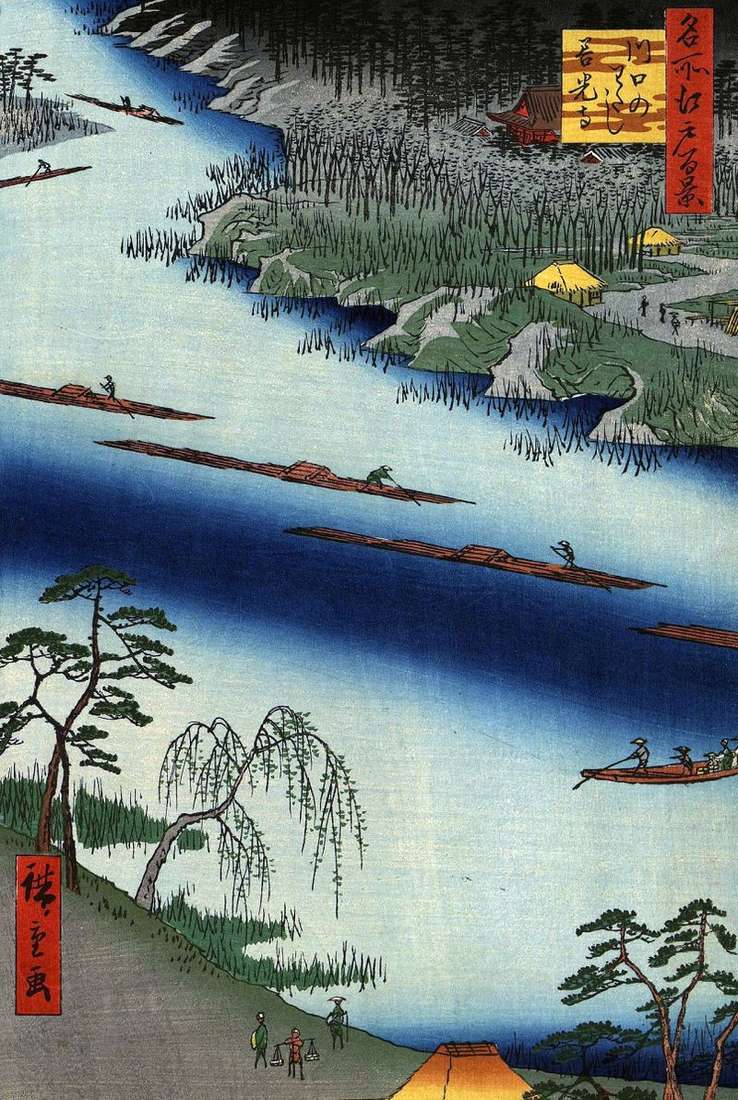 Monastery Zenkoji at the crossing in Kawaguchi no Watasi by Utagawa Hiroshige
Monastery Zenkoji at the crossing in Kawaguchi no Watasi by Utagawa Hiroshige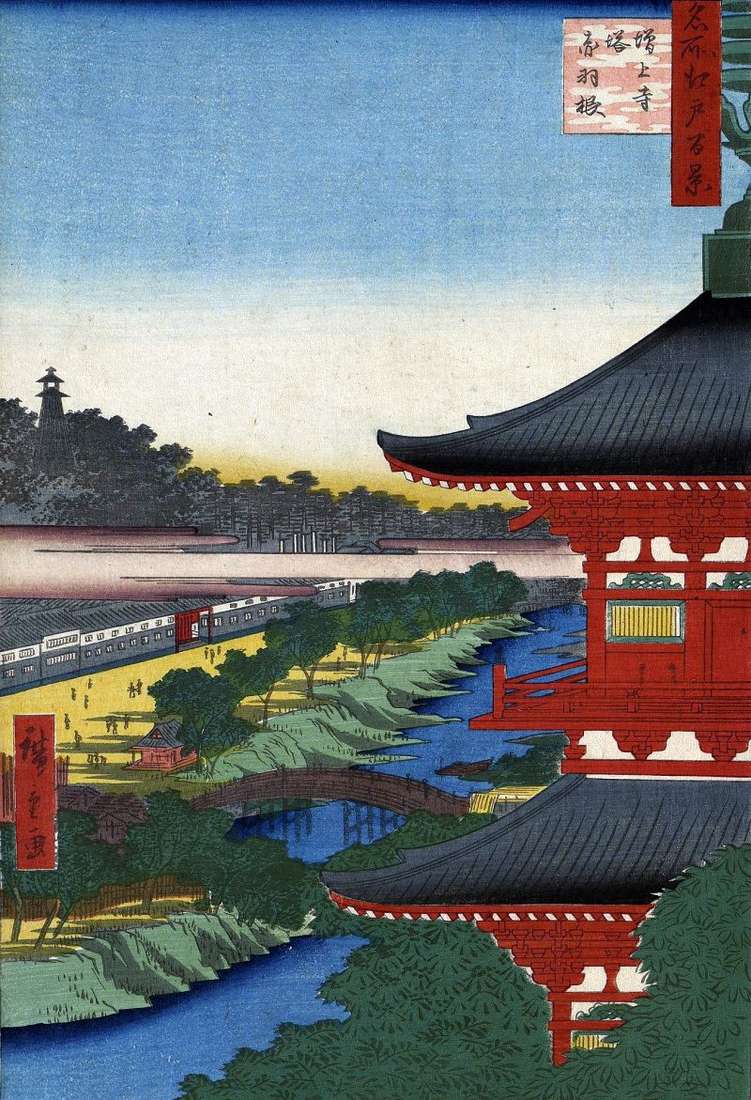 Pagoda of the Dzodzi Monastery and the Akabane district by Utagawa Hiroshige
Pagoda of the Dzodzi Monastery and the Akabane district by Utagawa Hiroshige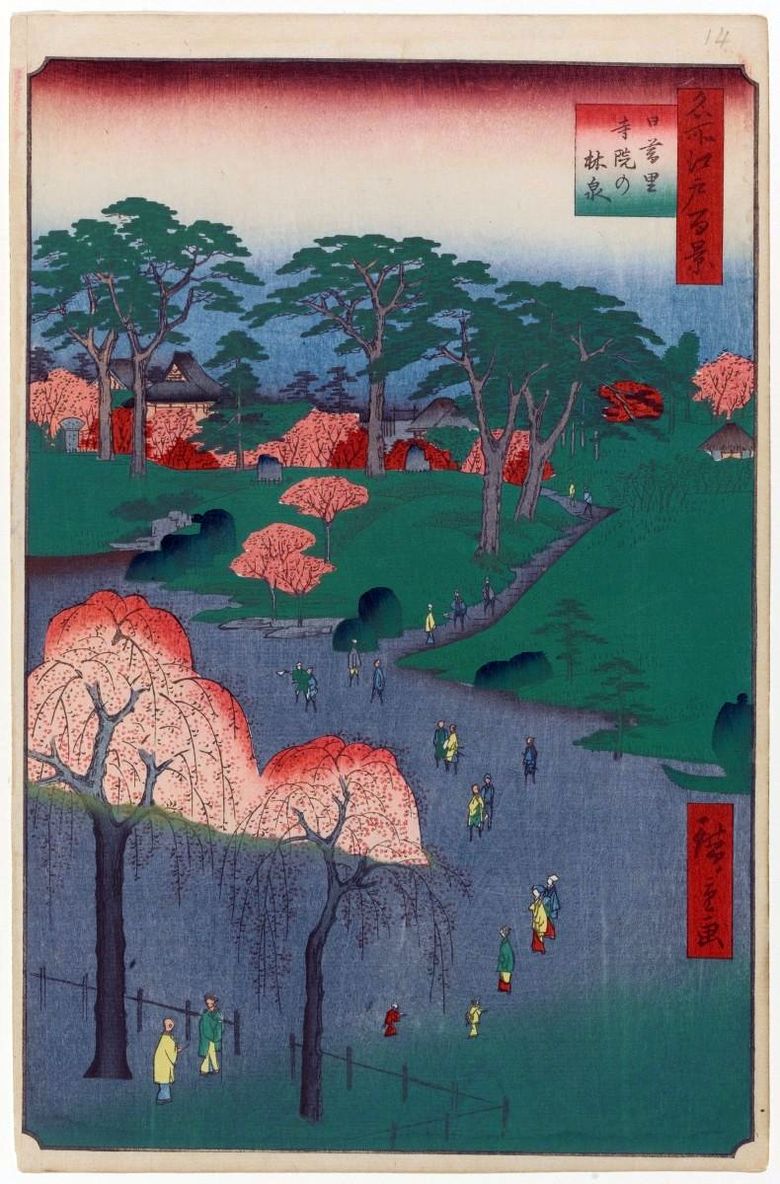 Jardins du monastère de Nippori
Jardins du monastère de Nippori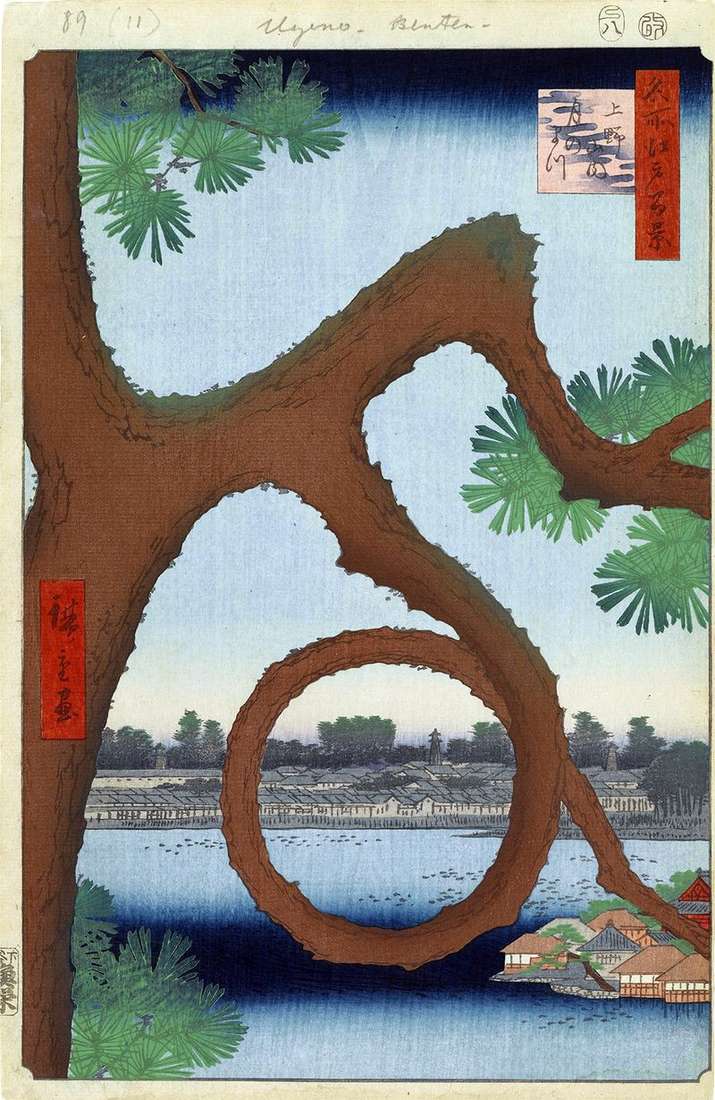 Moon pine on the territory of the monastery in Ueno by Utagawa Hiroshige
Moon pine on the territory of the monastery in Ueno by Utagawa Hiroshige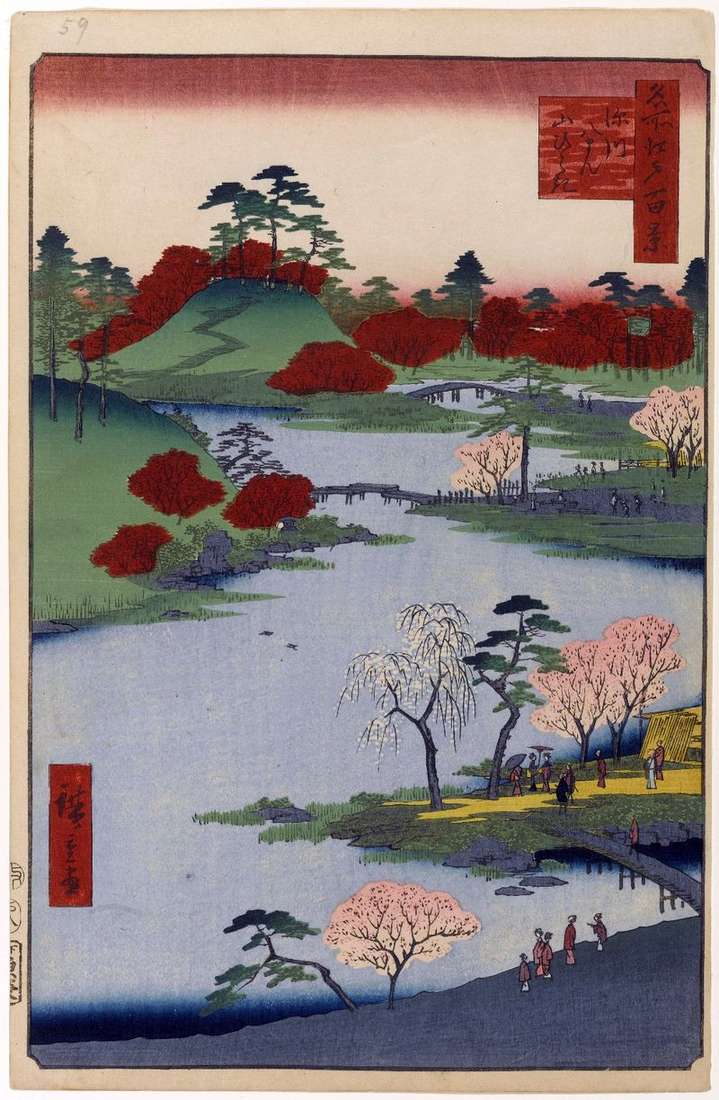 Opening of the mountain in the sanctuary of Hatiman in Fukagawa by Utagawa Hiroshige
Opening of the mountain in the sanctuary of Hatiman in Fukagawa by Utagawa Hiroshige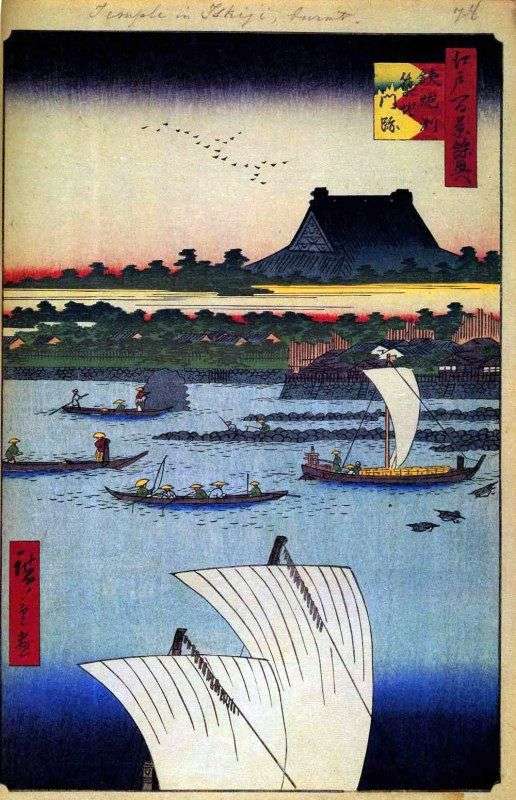 Monastery of Nishi-Hongadzi in Tsukidzimansake on the shallows Teppozu Tappodzu by Utagawa Hiroshige
Monastery of Nishi-Hongadzi in Tsukidzimansake on the shallows Teppozu Tappodzu by Utagawa Hiroshige